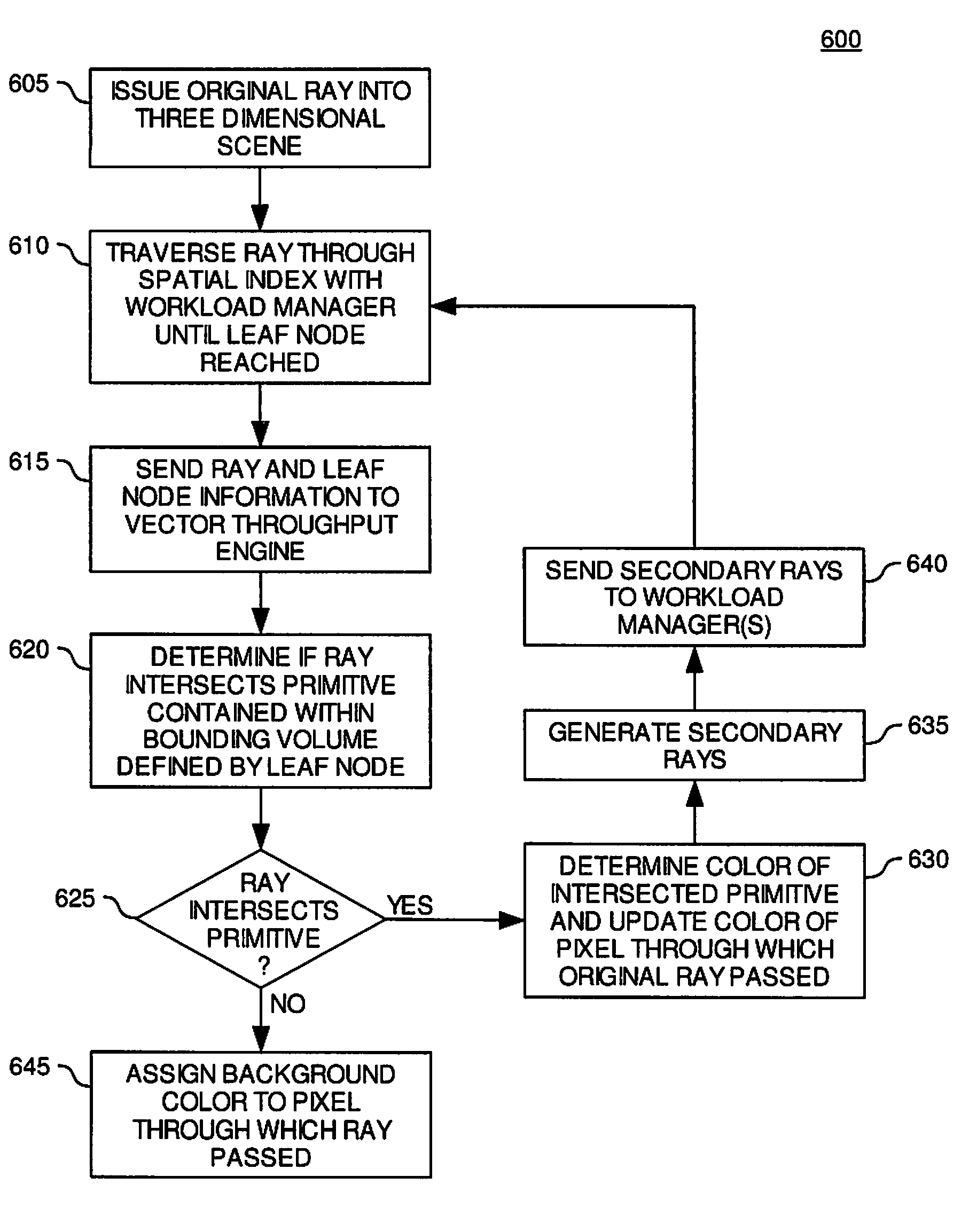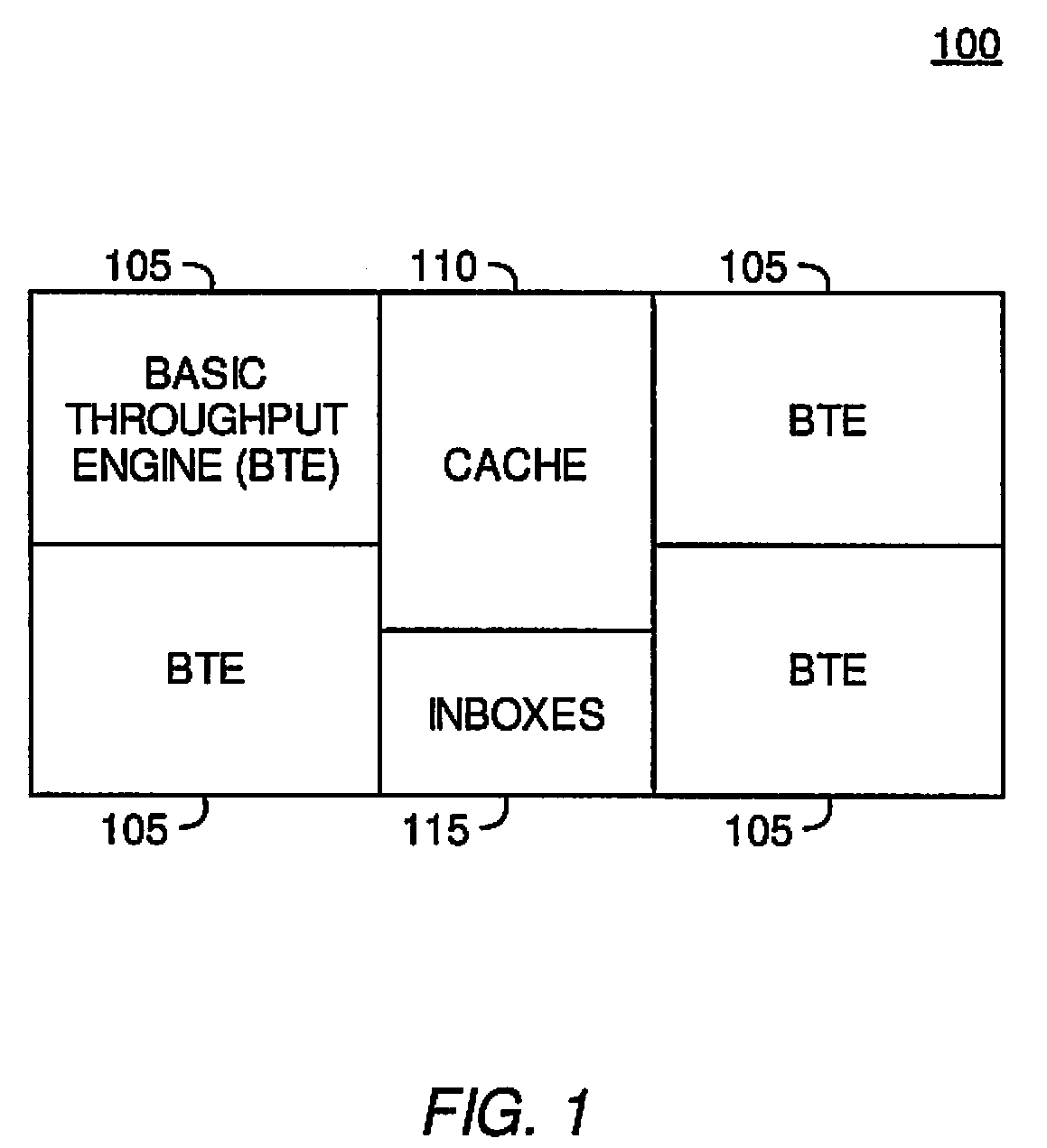Dynamic Determination of Optimal Spatial Index Mapping to Processor Thread Resources
a technology of optimal spatial index and processor thread resources, applied in the field of image processing, can solve the problems of rasterization suffering from some drawbacks, modern monitors display images, and use relatively low amounts of computational power
- Summary
- Abstract
- Description
- Claims
- Application Information
AI Technical Summary
Benefits of technology
Problems solved by technology
Method used
Image
Examples
Embodiment Construction
[0028]Embodiments of the invention provide methods and apparatus to distribute workload amongst processing elements in a ray tracing image processing system. According to one embodiment of the invention, operations relating to rays which are traced to leaf nodes of a spatial index may be mapped or assigned to a plurality of processing elements. The processing elements responsible for the operations may monitor their workload, and if the workload exceeds a threshold the processing elements may transfer the operations relating to the rays to other idle processing elements. Furthermore, the image processing system may monitor the workload experienced by the processing elements. In response to an unbalanced workload amongst the processing elements, the image processing system may remap or reassign the operations to different processing elements.
[0029]In the following, reference is made to embodiments of the invention. However, it should be understood that the invention is not limited to...
PUM
 Login to View More
Login to View More Abstract
Description
Claims
Application Information
 Login to View More
Login to View More - R&D
- Intellectual Property
- Life Sciences
- Materials
- Tech Scout
- Unparalleled Data Quality
- Higher Quality Content
- 60% Fewer Hallucinations
Browse by: Latest US Patents, China's latest patents, Technical Efficacy Thesaurus, Application Domain, Technology Topic, Popular Technical Reports.
© 2025 PatSnap. All rights reserved.Legal|Privacy policy|Modern Slavery Act Transparency Statement|Sitemap|About US| Contact US: help@patsnap.com



